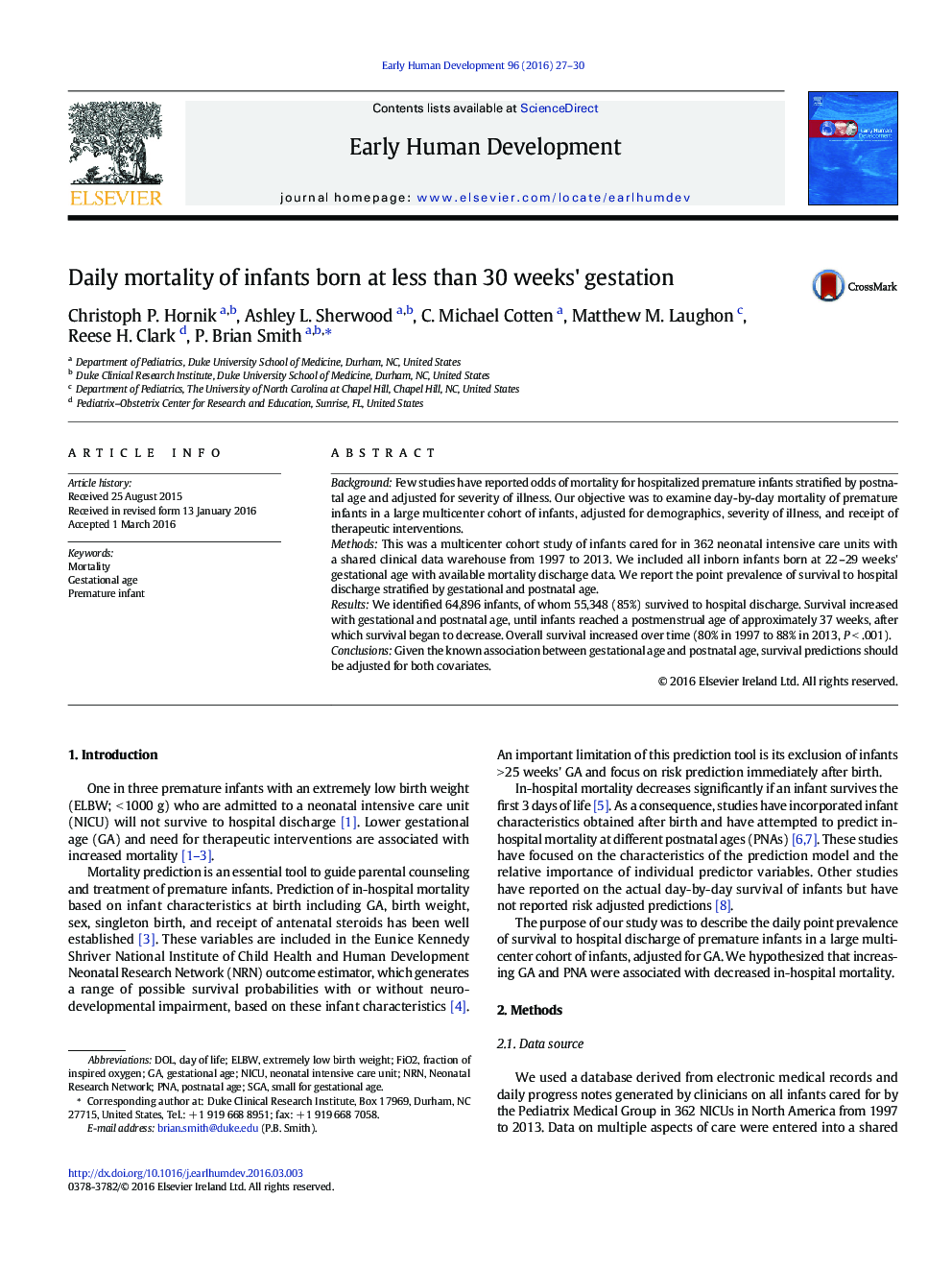| Article ID | Journal | Published Year | Pages | File Type |
|---|---|---|---|---|
| 3916451 | Early Human Development | 2016 | 4 Pages |
•Overall survival among 64,896 infants < 30 weeks gestational age was 85%.•Odds of survival increased over time, from 80% in 1997 to 88% in 2013.•Survival increased with postnatal age until a postmenstrual age near term.•Prematurity is no longer a risk factor in infants with postmenstrual age near term.
BackgroundFew studies have reported odds of mortality for hospitalized premature infants stratified by postnatal age and adjusted for severity of illness. Our objective was to examine day-by-day mortality of premature infants in a large multicenter cohort of infants, adjusted for demographics, severity of illness, and receipt of therapeutic interventions.MethodsThis was a multicenter cohort study of infants cared for in 362 neonatal intensive care units with a shared clinical data warehouse from 1997 to 2013. We included all inborn infants born at 22–29 weeks' gestational age with available mortality discharge data. We report the point prevalence of survival to hospital discharge stratified by gestational and postnatal age.ResultsWe identified 64,896 infants, of whom 55,348 (85%) survived to hospital discharge. Survival increased with gestational and postnatal age, until infants reached a postmenstrual age of approximately 37 weeks, after which survival began to decrease. Overall survival increased over time (80% in 1997 to 88% in 2013, P < .001).ConclusionsGiven the known association between gestational age and postnatal age, survival predictions should be adjusted for both covariates.
